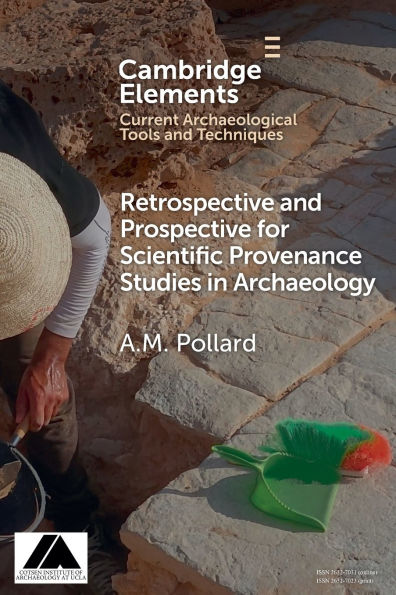Retrospective and Prospective for Scientific Provenance Studies in Archaeology
Provenance has been one of the major scientific applications in archaeology for a hundred years. The 'Golden Age' began in the 1950s, when large programmes were initiated focussing on bronzes, ceramics, and lithics. However, these had varying impact, ranging from wide acceptance to outright rejection. This Element reviews some of these programmes, mainly in Eurasia and North America, focussing on how the complexity of the material, and the effects of human behaviour, can impact on such studies. The conclusion is that provenance studies of lithic materials and obsidian are likely to be reliable, but those on ceramics and metals are increasingly complicated, especially in the light of mixing and recycling. An alternative is suggested, which focusses more on using scientific studies to understand the relationship between human selectivity and processing and the wider resources available, rather than on the simple question of 'where does this object come from'.
1146875719
Retrospective and Prospective for Scientific Provenance Studies in Archaeology
Provenance has been one of the major scientific applications in archaeology for a hundred years. The 'Golden Age' began in the 1950s, when large programmes were initiated focussing on bronzes, ceramics, and lithics. However, these had varying impact, ranging from wide acceptance to outright rejection. This Element reviews some of these programmes, mainly in Eurasia and North America, focussing on how the complexity of the material, and the effects of human behaviour, can impact on such studies. The conclusion is that provenance studies of lithic materials and obsidian are likely to be reliable, but those on ceramics and metals are increasingly complicated, especially in the light of mixing and recycling. An alternative is suggested, which focusses more on using scientific studies to understand the relationship between human selectivity and processing and the wider resources available, rather than on the simple question of 'where does this object come from'.
23.0
In Stock
5
1

Retrospective and Prospective for Scientific Provenance Studies in Archaeology
84
Retrospective and Prospective for Scientific Provenance Studies in Archaeology
84
23.0
In Stock

Product Details
| ISBN-13: | 9781009592222 |
|---|---|
| Publisher: | Cambridge University Press |
| Publication date: | 02/06/2025 |
| Series: | Elements in Current Archaeological Tools and Techniques |
| Pages: | 84 |
| Product dimensions: | 5.98(w) x 9.02(h) x 0.16(d) |
From the B&N Reads Blog
